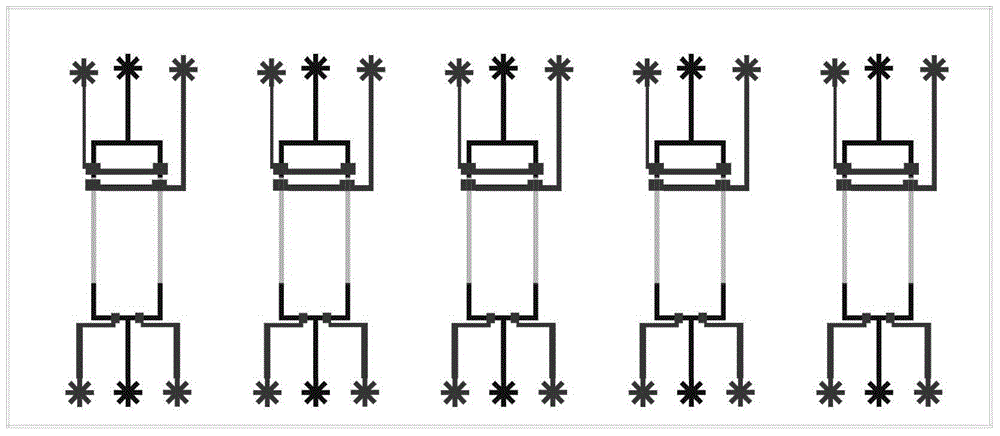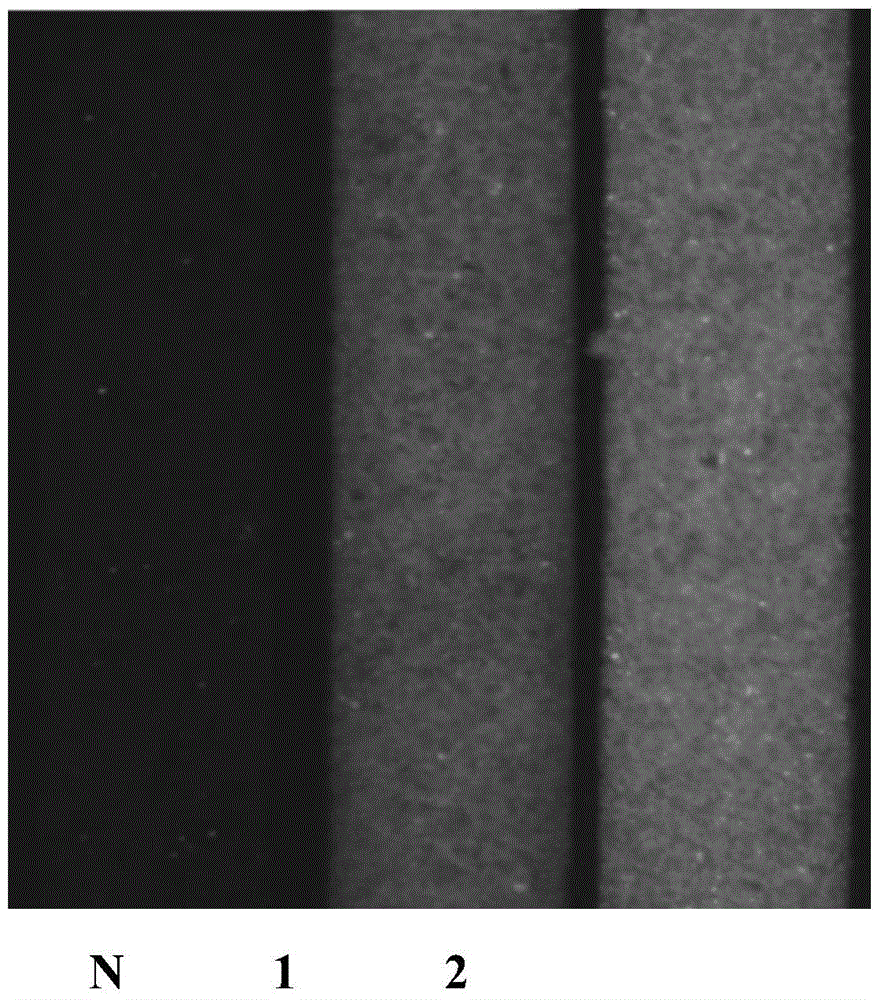Method for serologically detecting babesiasis based on micro-fluidic chips and application thereof
A microfluidic chip and babesiosis technology, applied in the field of biomedical research and clinical application, can solve problems such as cross-contamination and non-specific adsorption, improve diagnostic accuracy, improve reaction efficiency, and simplify operation steps Effect
- Summary
- Abstract
- Description
- Claims
- Application Information
AI Technical Summary
Problems solved by technology
Method used
Image
Examples
Embodiment 1
[0027] Example 1 Preparation of microfluidic chip
[0028] Put the silicon chip into Piranha solution (98% concentrated sulfuric acid: 30% hydrogen peroxide=7:3) and boil for 15 minutes. Rinse five times with deionized water, blow dry with nitrogen, and bake at 200°C for 30 minutes. Pour Microchem's SU-8 glue on the center of the silicon wafer and rotate slowly so that SU-8 covers most of the silicon wafer. Use a spin coater to spin coat at 3000 rpm for 60s to make the glue more evenly distributed, and let it stand for 10 minutes to alleviate the edge protrusion effect. Followed by a soft bake. The purpose of soft baking is to volatilize the solvent in the SU-8 photoresist, and the key to process control is to volatilize the solvent at a controllable rate. Keep at 65°C, 95°C and 65°C for 3min, 6min and 3min, respectively. Then slowly lower to room temperature at a rate of 0.5°C / min. A contact exposure machine (wavelength 365 nm) was used. Post exposure bake (PEB, post ex...
Embodiment 2
[0029] Example 2 Enzyme-linked immunosorbent assay (ELISA) detects serum of patients with babesiosis
[0030] Add 100 μl of Coating Buffer containing 100 ng of Babesia surface antigen BMSA to each well of the 96-well ELISA plate, and place in a humid box at 4°C overnight. After washing the plate with PBS (containing 0.05% Tween20), 400 μl of PBS containing 3% skimmed milk was added to each well, and blocked at room temperature for 1 hour in a humid chamber. Add 100 μl of healthy or patient serum (diluted 1:400) to each well, and incubate for 1 hour at room temperature in a wet box with healthy human serum (diluted 1:400) as the negative control. After washing the plate with PBS (containing 0.05% Tween20), 100 μl of horseradish peroxidase-labeled goat anti-human IgG (diluted 1:1000) was added to each well, and incubated for 1 h at room temperature in a humid chamber. After washing the plate with PBS (containing 0.05% Tween20), add 200 μl / well of chromogenic solution, react in ...
Embodiment 3
[0031] Example 3 Detection of Babesia patient serum by microfluidic chip
[0032] After the anti-HIS antibody was pumped into the analysis chamber of the microfluidic chip, after several times of PBS washing, several filler volumes of recombinant Babesia surface antigen BMSA solution were pumped into different analysis chambers, through specific binding, the lysed Babesia Bayworm protein antigen assay chamber surface binding. After several times of washing with PBS, the PBS containing 5% bovine albumin was pumped into the analysis chamber of the microfluidic chip, and the analysis chamber combined with the recombinant Babesia antigen was sealed. Subsequently, the diluted serum of Babesia patients is pumped into the analysis chamber of the microfluidic chip, and the anti-Babesia surface antigen BMSA antibody in the serum specifically binds to the recombinant Babesia surface protein on the surface of the analysis chamber. After several times of washing with PBS, the labeled ant...
PUM
 Login to View More
Login to View More Abstract
Description
Claims
Application Information
 Login to View More
Login to View More - R&D
- Intellectual Property
- Life Sciences
- Materials
- Tech Scout
- Unparalleled Data Quality
- Higher Quality Content
- 60% Fewer Hallucinations
Browse by: Latest US Patents, China's latest patents, Technical Efficacy Thesaurus, Application Domain, Technology Topic, Popular Technical Reports.
© 2025 PatSnap. All rights reserved.Legal|Privacy policy|Modern Slavery Act Transparency Statement|Sitemap|About US| Contact US: help@patsnap.com


